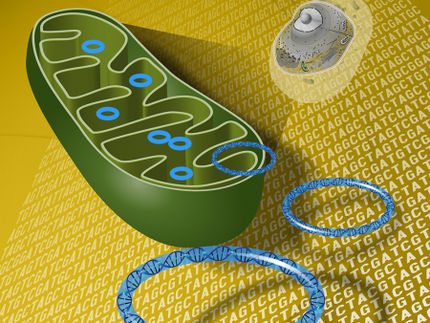When cells run out of fuel
Parkinson's genes ensure the energy supply of neurons
Advertisement
Parkinson's disease is caused by the degeneration of neurons in the midbrain. The mechanisms leading to the loss of these neurons, however, are largely unknown. Recent research revealed that about ten per cent of cases are caused by defects in so-called Parkinson-associated genes. Furthermore, mitochondria, the cellular powerhouses, seem to play a major role. New results from researchers at the LMU Munich under the lead of associate professor Dr. Konstanze Winklhofer and Professor Christian Haass connect both phenomena, showing that two Parkinson genes maintain the function of mitochondria.
"Diseases like Parkinson's where at least some cases are unambiguously related to the dysfunction of specific genes offer a promising research opportunity," explains biochemist Dr. Konstanze Winklhofer "When we understand the function of these genes, we can learn a lot about the causes of the disease, its progress and possible new therapies." Professor Wolfgang Wurst and his group of the Institute for Developmental Genetics at the Helmholtz Center Munich also contributed to this work.
"Functionally impaired mitochondria have been recognized to trigger Parkinson's disease already in the early eighties," Dr. Konstanze Winklhofer says, an associate professor at the Adolf-Butenandt Institute of the Ludwig-Maximilians-Universität (LMU) in Munich. At this time it was discovered by accident that mitochondrial toxins can induce Parkinson's disease. The relevance of mitochondria to the loss of neurons seems plausible – after all, mitochondria supply the cells with energy in form of adenosine triphosphate and play a substantial role in the regulation of cell death.
The scientists' results now combine both observations on a genetic basis. They found that the Parkinson-associated genes PINK1 and Parkin functionally interact to maintain mitochondrial function. Loss of Parkin or PINK1 function impairs the morphology and activity of mitochondria, which then produce less adenosine triphosphate. "Our results also confirm the high neuroprotective potential of Parkin", Winklhofer says. "We observed that Parkin can compensate a loss of PINK1 function, but not the other way round". Winklhofer and her colleagues have shown earlier that Parkin can protect neurons under various stress conditions.
Until today, there is no possibility to prevent or cure Parkinson's disease. All pharmacological approaches are merely symptomatic and aim at replacing the neurotransmitter dopamine. Insight into the function of Parkinson-associated genes can help to identify new targets for therapeutic strategies in order to prevent or halt the loss of dopamine-producing neurons. So far, six Parkinson-associated genes are known whose functions remain to be elucidated in detail. In the case of Parkin and PINK1 scientists have made significant steps forward and now aim at uncovering the molecular mechanisms of their functions.
Original publication: Lutz, A.K., Exner, N., Fett, M.E., Schlehe, J.S., Kloos, K., Laemmermann, K., Brunner, B., Kurz-Drechsler, A., Vogel, F., Reichert, A.S., Bouman, L., Vogt-Weisenhorn, D., Wurst, W., Tatzelt, J., Haass, C., and Winkelhofer, K.F. ; "Loss of parkin or PINK1 function increases DRP1-independent mitochondrial fragmentation"; Journal of Biological Chemistry 2009. Vol. 284, Issue 34, 22938-22951.
























































